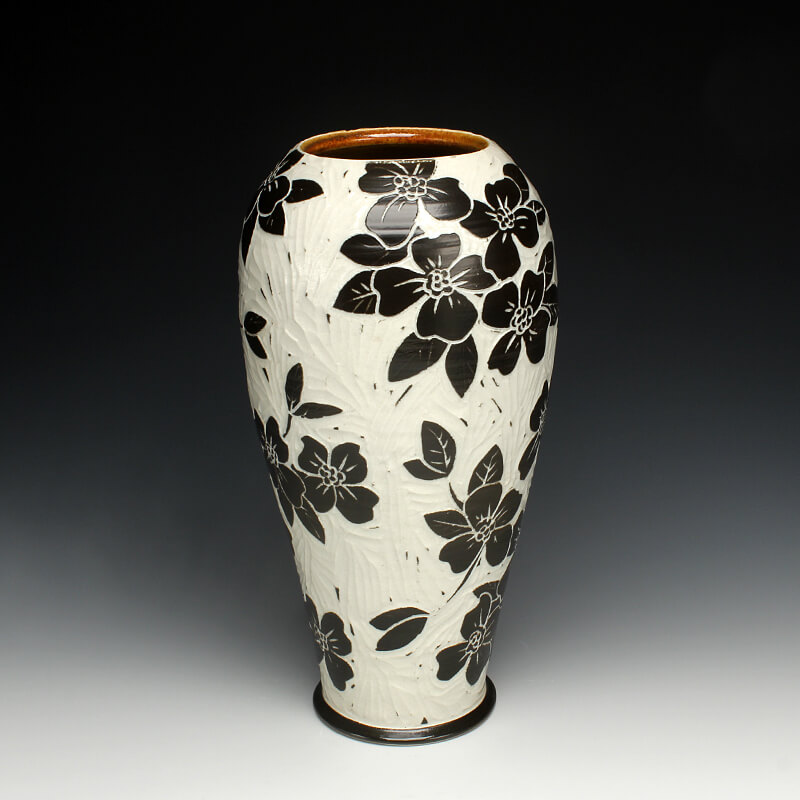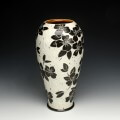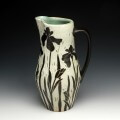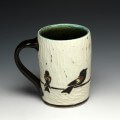
I began making pots while studying at Louisiana State University. That elective class turned out to be my new career and obsession. After graduating in 1992, I attended Penland School of Crafts in Western North Carolina for two years as a Core Student-a work-study scholarship. It was during this time that I decided to become a full time studio potter. Penland was a great place to expand my ceramic education and learn about the business of craft giving me the confidence to strike out on my own. I was exposed to many instructors with many ideas that influenced my pots. I find that my pots are influenced by many sources: Japanese pots for the simplicity in utility, French pots for their ornate qualities and elaborate scenes, finials and handles, English pots for their sense of humor balanced with formality.
After completing the Penland program, I moved to Saluda, North Carolina where I begin my pottery business in 1996. In 2003 I moved the pottery to Asheville, North Carolina where I continue to make pots full time in my home studio and at my vibrant River Arts District Studio and Gallery.
My love of ceramic history influences the pots I make, so I strive to encompass many ceramic techniques from around the world. I use the sgrafitto carving technique which was developed in the eastern Mediterranean in the 4th century. The images on their pots represented aspects of their everyday experiences. This idea of using scenes and icons from daily life has always been an integral part of my work. I use an English porcelain clay and to complete my pots I fire them in a salt kiln, a firing method developed in Germany in the 16th century. I am also influenced by Asian, English, Islamic and French pottery from different periods. I strive to encompass many ceramic traditions from around the world and from different parts of history in the pots I make. Using the reductive sgrafitto carving method enables me to add movement to the images on the surface of my pots. To further amplify this notion of lively animation I use the salt glaze firing method to activate the surface of my pots. This firing style promotes subtle color variations in the clay and applied glazes while also glazing the carved areas of my pots. The fire completes my process making each piece distinctive.






